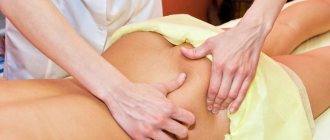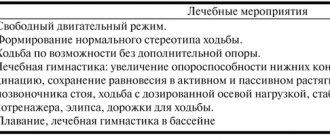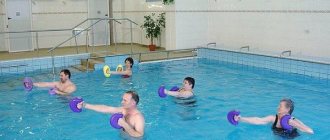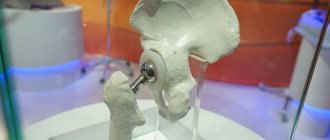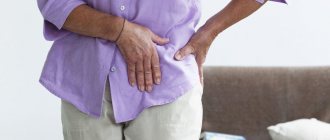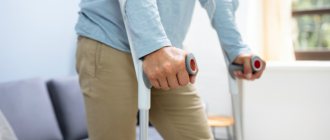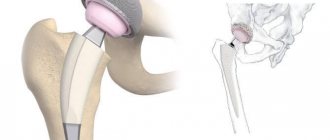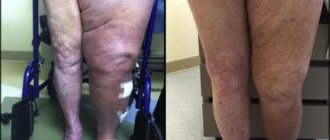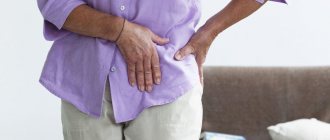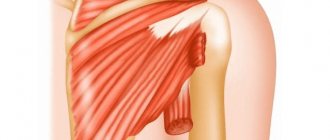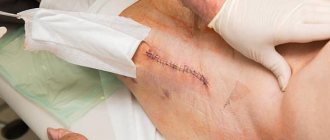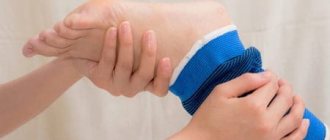A successful knee and hip replacement operation requires further action - a high-quality rehabilitation course. Rehabilitation after endoprosthetics is a vital stage of treatment, the absence of which can nullify all efforts made to save the joint. This is a long and meticulous process.
The timing of its completion is largely determined by:
- The age of the patient;
- The complexity of the operation;
- Individual characteristics of a person.
Preparation for endoprosthetics
At the stage of preparation for hip replacement surgery, the kinesitherapist assesses in more detail the motor potential of not only the diseased limb, but also the entire musculoskeletal system.
The back muscles are necessarily subject to revision. Particular attention is paid to examining the lower back and healthy limbs, since during illness they bear additional load, being the main support.
Sometimes, when the painful process lasts for years, it leads to serious anatomical disorders. And for the first time after surgery, the compensatory load on the second leg will increase even more.
.
Based on the collected medical history, the kinesiotherapist draws up an individual preoperative motor program.
The main task of this stage is to prepare all the structures surrounding the diseased joint, including the ligament muscles, as well as peripheral vessels and the cardiovascular system, since the operation can involve a large amount of blood loss, especially in people over 50 and in patients with concomitant pathologies.
The training program takes into account all these factors. Its task is to maximize the recovery capabilities of the body.
Possible complications
Any surgical intervention is traumatic for the body and carries a certain risk of complications, even with the installation of an expensive endoprosthesis. They can occur both during and after surgery. These include:
- fracture of the femoral diaphysis;
- failure of prosthetic components;
- bleeding;
- fat embolism;
- vein thrombosis;
- inflammatory and infectious processes.
Prosthetic operations are so well developed that the likelihood of complications is extremely low. Negative reactions after anesthesia have also been significantly reduced, as more and more interventions are performed without general anesthesia.
Rehabilitation after joint replacement
After endoprosthetics, rehabilitation measures begin almost immediately, literally the next day after the operation. To do this, a physical therapy instructor comes to the patient’s room and shows simple and harmless exercises without rotation in the joint. Light massage and physiotherapy are also available.
If the operation was successful, without complications, then the patient is recommended to start standing up and try to walk with support (crutches) almost on the second or third day after joint replacement.
As for rehabilitation at the center of Dr. Bubnovsky, it can begin immediately after discharge from the clinic, after the stitches are removed and the postoperative wound has healed.
If the patient has not undergone preparation for surgery at Dr. Bubnovsky’s center, then during the initial examination, as a rule, many related problems are found. This:
-weak back and lower back muscles
-weak leg muscles
-detrained general condition
-fear of walking
-changed walking pattern
-possible problems with the spine, hernias, protrusions
- postoperative limitation of movement in the hip joint
- associated lower back pain
In addition, at the rehabilitation stage, patients and kinesiotherapists also face the following main tasks:
- restore joint mobility,
- include the entire chain of motion,
- restore gait
-eliminate the curvature of the pelvis and return the body to the correct position
-prevent possible subluxation of the head in the joint that has undergone surgery
-prevent possible problems in other joints that were subject to uneven load.
The sooner you start rehabilitation using the Bubnovsky method, the faster the patient will return to normal life and work.
Efficiency
Having completed the full course of therapy, the early postoperative period ends after 10 days. At this time, the goal of rehabilitation is to prevent the development of negative consequences and deterioration of the patient’s condition.
Further rehabilitation continues for 2-3 months. During this time, the patient notes improvements, expressed in a decrease in pain, restoration of mobility, and rapid tissue regeneration. It is worth noting the psychological factor. Our specialists always encourage you, putting you in a positive mood, because the success of the operation depends on the patient’s wishes.
Rehabilitation after endoprosthetics
At the first stage, mainly basic rehabilitation models of simulators are used. The exercises are simple, without rotation in the hip joint. This activates the muscles and increases the range of motion of the leg. When the patient achieves the desired results, the next stage begins.
At the second stage of rehabilitation, an expanded range of new exercises is used for a deeper impact on the muscles that control joint movement. This allows you to make a block multifunctional Bubnovsky simulator (MTB).
The simulator eliminates dangerous axial loads, exercises are performed easily and comfortably. During training, special cuffs are used, and exercises are performed in a physiological mode.
At this stage, the main function of the joint is restored - rotation, that is, rotation. All classes are conducted under the supervision of an instructor and the supervision of the attending kinesiotherapist.
At the third stage of rehabilitation, the main task is to relieve the patient of additional support: crutches or a cane. Restore posture, return to the usual walking pattern, get rid of lameness.
The patient continues the course of training on simulators, but is supplemented by walking training in front of a mirror and, possibly, if indicated, articular ground gymnastics, sauna therapy, and cold douses.
In three rehabilitation courses, specialists at Dr. Bubnovsky's center completely return a person to a normal lifestyle and work. The sooner you start rehabilitation after hip replacement and take a preliminary course of preparation for surgery, the faster the recovery process will go.
After rehabilitation, the kinesiotherapist draws up a plan for individual physical activity for the patient, indicating the amount and type of everyday stress, restrictions and recommended exercises, and also draws up a plan for taking preventive classes at Dr. Bubnovsky’s center in the future.
Sign up for a consultation
Prices in your city
Russia
- Russia
- Kazakhstan
- Azerbaijan
- Belarus
- Kyrgyzstan
- Latvia
- Uzbekistan
- Ukraine
Moscow
- Adler
- Almetyevsk
- Anapa
- Angarsk
- Arkhangelsk
- Astrakhan
- Balashikha
- Barnaul
- Belgorod
- Biysk
- Blagoveshchensk
- Bratsk
- Bryansk
- Vladivostok
- Vladimir
- Vologda
- Voronezh
- Grozny
- Ivanovo
- Irkutsk
- Yoshkar-Ola
- Kazan
- Kaliningrad
- Kaluga
- Kemerovo
- Korolev
- Kostroma
- Kotlas
- Krasnodar
- Kyzyl
- Leninogorsk
- Magnitogorsk
- Makhachkala
- Moscow
- Naberezhnye Chelny
- Nazran
- Nalchik
- Nizhnekamsk
- Nizhny Novgorod
- Novodvinsk
- Novokuznetsk
- Novosibirsk
- October
- Omsk
- Pavlovo
- Penza
- Permian
- Petrozavodsk
- Pskov
- Pushkino
- Rostov-on-Don
- Ryazan
- Samara
- Saint Petersburg
- Saransk
- Saratov
- Sarov
- Sevastopol
- Sergiev Posad
- Smolensk
- Sochi
- Stary Oskol
- Sterlitamak
- Tambov
- Tomsk
- Tula
- Tyumen
- Ulan-Ude
- Ulyanovsk
- Ufa
- Khabarovsk
- Khimki
- Chelyabinsk
- Yaroslavl
Select a branch
- m. Aviamotornaya - Moscow, st. Aviamotornaya, 10, building 2
- m. Academicheskaya - Moscow, st. Dm. Ulyanova, 31
- metro station Altufyevo - Moscow, Altufevskoe highway, 70, building 2
- m. Bagrationovskaya - Moscow, st. Novozavodskaya, 27A
- m. Belorusskaya - Moscow, 1st st. Yamskogo Polya, 24
- m. Boulevard Dm. Donskoy - Moscow, st. Feodosiyskaya, 2
- metro station Butyrskaya - Moscow, 17th proezd Maryina Roshchi, 4, building 1
- m. Kashirskaya - Moscow, Kashirskoe highway, 43, building 4
- Khodynka metro station, CSKA metro station, Polezhaevskaya metro station - Moscow, Berezovaya Roshchi passage, 12
Rehabilitation center "Overcoming"
Description
The Preodoleniye RC was built with the participation of the Moscow government and began work in 2007. In the rehabilitation center, the patient can recover both in a day hospital and a 24-hour hospital. 24-hour stay is especially important for people who have recently undergone hip replacement surgery, since their ability to move is severely limited. The stationary service is very ergonomic. The wards, bathrooms and toilets are equipped taking into account all the characteristics of people with musculoskeletal disorders.
Exterior and staff of the center.
The comfortable wards (1, 2, 3, 4-bed) have good orthopedic beds, there are systems for urgently calling medical staff at the request of the patient, there are TVs and refrigerators, there is a telephone, Internet, air conditioning, safes and comfortable furniture for placing things. On the territory there are ATMs, terminals for replenishing a mobile account, a cozy cafe, shopping and pharmacy kiosks, a cinema and karaoke room, a winter garden and many other amenities. The structure of the medical institution includes as many as 6 exercise therapy rooms and one large gym.
The process of individual lessons.
The qualified staff studied and trained in leading medical institutions in Germany, Italy, Israel and other countries of high medicine. Doctors have European level certificates in various categories of physical rehabilitation. Currently he runs the medical and rehabilitation institution F.A. Bushkov – Ph.D., specialist with a higher degree in physical therapy and sports medicine. It is possible to undergo a rehabilitation course on a budgetary basis, but for this, a necessary condition is the presence of 1-2 groups of disability associated with musculoskeletal disorders, and the presence of Moscow registration.
Location
The rehabilitation center is located at the address: Moscow, March 8th Street, building No. 6a, building 1. The nearest landmarks are the Dynamo metro station, Petrovsky Park.
How to get.
Prices
There is no price list for services on the official website, so it is difficult to talk specifically about prices for this or that type of rehabilitation assistance. On the forums, some patients report that per day of stay (it is not known what services are still included) they request from 10,000 to 13,000 rubles. There is information that on a verticalizer, 30 minutes of training in “Overcoming” costs about 1,200 rubles. For diagnostics, prices are open only for MRI and radiography: MRI of the hip joint - 4600 rubles, radiography of the joint - 1800.
Technologies
Leading technologies of the CR “Overcoming”, successfully solving the problem of motor and support disorders: kinesiotherapy, a system of gymnastic exercises in the pool, classes on a stabilometric platform, mechanotherapy (on cyclic and strength training machines, standers, etc.), egrotherapeutic methods. The technological base is represented by the best imported and domestic medical and rehabilitation equipment.
Evolv Glider Adult.
The halls are equipped with an Evolv Glider Adult verticalizer, a MOTOmed orthopedic leg trainer, a Lojer orthostatic table, and medical treadmills. Patients also exercise on the Kinect Xbox 360 balance simulator, the Alter Step dynamic staircase-beams device, the Stabilan-01-2 stabilization analyzer with biofeedback function, and the Reo Go ExoAtlet mechanical simulator.
Reo Go ExoAtlet.
For physical treatment, the medical institution uses the Khivamat oscillator, three types of hydromassage baths, 6-channel electromyostimulators "Galatea", lymphatic drainage devices "Pressomed", UHF equipment Curapuls, magnetic therapy systems ("Magnetomed", "Cascade", "Almag", "Milta" ", etc.), BTL laser therapy device and many other devices.
Possibility of home visits
Yes, the medical institution practices on-site raids on the patient’s home. This is done by a special multidisciplinary team of rehabilitation doctors. However, only disabled people of groups 1-3 can count on home rehabilitation, and strictly Muscovites, aged 40 years and older.
Prices
| Initial consultation with a doctor on rehabilitation after hip replacement | From 500 rub. |
| First treatment cycle (12 sessions) | From 6,500 rub. |
| One lesson | From 700 rub. |
| Zonal taping | From 500 rub. |
| General massage | From 1,000 rub. |
| Aerogymnastics (1 lesson) | From 400 rub. |
Based on the results of the consultation, diagnosis and/or treatment will be prescribed.
*Prices in different regions may vary; current information on the cost of services can be obtained from the center manager.
